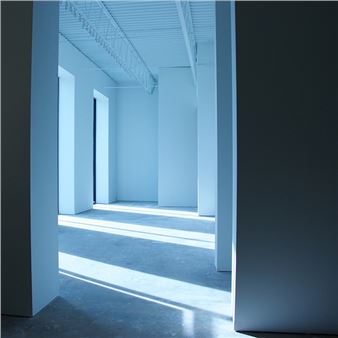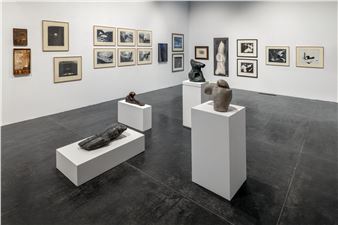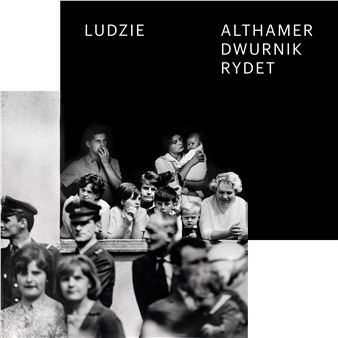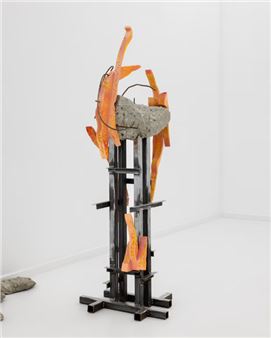Wanda ฐไณ๚ฑ๐ลฐ์ดวทษฒ๕ฐ์ฒน: Retrospection
Having been artistically active for well over fifty years, ฐไณ๚ฑ๐ลฐ์ดวทษฒ๕ฐ์ฒน takes a reflective look at her oeuvre which has always stayed in touch with all the most significant currents of 20th c. avant-garde art: neo-primitivism, expressionism, conceptualism. The contemporary installation she has designed especially for the ฐญฐ๙รณฑ๔พฑฐ์ฒนฐ๙ฒิพฑฒน exhibition, incorporates the artistโs historical works. Sculpture has always been the chief means of Wanda ฐไณ๚ฑ๐ลฐ์ดวทษฒ๕ฐ์ฒนโs expression, though she has more than once crossed the traditional understanding of the discipline.
Born in 1930, Wanda ฐไณ๚ฑ๐ลฐ์ดวทษฒ๕ฐ์ฒน is an artist of utmost originality and independence. Though highly recognized by specialists, her work still awaits an exhaustive analysis in art history. Neither has the potential of her art been fully explored in exhibition spaces. Nonetheless, the few and fragmentary presentations of her work have always intrigued and stirred curiosity. It took only one sculpture and two drawings by ฐไณ๚ฑ๐ลฐ์ดวทษฒ๕ฐ์ฒน, presented in May of this year at a collective exhibition at New Yorkโs 1602 Broadway Gallery, for the Artspace critic, Andrew M. Goldstein, to claim the show to be one of the best ten presented at the Frieze New York 2016 - a key event In the calendar of the global artworld.
The concept for Wanda ฐไณ๚ฑ๐ลฐ์ดวทษฒ๕ฐ์ฒนโs solo presentation at ฐญฐ๙รณฑ๔พฑฐ์ฒนฐ๙ฒิพฑฒน, with an accompanying publication and an academic conference to be held at the Sculpture Museum in February 2016, was forged during the many hours of conversation the artist spent with Ewa Opaลka, the curator of the exhibition and the long-time researcher of her oeuvre. In 2010, ฐไณ๚ฑ๐ลฐ์ดวทษฒ๕ฐ์ฒน made her studio in a post-industrial location in Warsawโs district of Mokotรณw, virtually a hop, skip and jump from ฐญฐ๙รณฑ๔พฑฐ์ฒนฐ๙ฒิพฑฒน. This incredible space, filled with natural light pouring in through the huge windows, houses the artistic effects of ฐไณ๚ฑ๐ลฐ์ดวทษฒ๕ฐ์ฒนโs long and creative life. There are the monumental plaster portraits - like the statues from Rapa Nui - standing among the geometrical constructions made of wooden planks and steel flat bars. The tables and turntables are covered with tools: grinders, hammers, brushes, chisels. Though it may all seem like great chaos, the situation is one of a well thought-out order, where each object has its place and its artistic sense - just as in the exhibition at ฐญฐ๙รณฑ๔พฑฐ์ฒนฐ๙ฒิพฑฒน. Here too, even the tiniest element has a precisely intended location, and every detail does mean something.
โRetrospectionโ is a term borrowed from literature and film. It means a reconstruction of events from the vantage point of a single person. At the exhibition of Wanda ฐไณ๚ฑ๐ลฐ์ดวทษฒ๕ฐ์ฒน, all events and works from the past have become a part of a contemporary installation, made up of pieces brought here from the nearby studio, new objects which have been created especially for ฐญฐ๙รณฑ๔พฑฐ์ฒนฐ๙ฒิพฑฒน, or works which years ago were procured by The National Museum in Warsaw, The Silesian Museum, or The National Museum in Krakow. And it was Krakow with which the artist had the longest relation. She graduated from the local Academy of Fine Arts in 1954. In the years 1969 โ 1981, she belonged to the Second Krakow Group, though she never strayed from her own individual path and thus never saw her membership in the group as of utmost importance. When still at the Academy, ฐไณ๚ฑ๐ลฐ์ดวทษฒ๕ฐ์ฒน developed her original style despite the then binding doctrine of socialist realism. The heavy, expressive, neo-primitive portraits from that period have been incorporated in the new installation titled โElipsesโ created in the space of ฐญฐ๙รณฑ๔พฑฐ์ฒนฐ๙ฒิพฑฒน. The sculptural head is the leitmotif of ฐไณ๚ฑ๐ลฐ์ดวทษฒ๕ฐ์ฒนโs art, processed and reprocessed to almost abstract forms (โThe Headโ, 1967), multiplied as in the monumental installation โThe Tableโ from the years 1968 โ 1972, or ostentatiously dematerialised as in โThe Absolute Elimination of the Sculpture as a Notion of Shapeโ (1972โ1994).
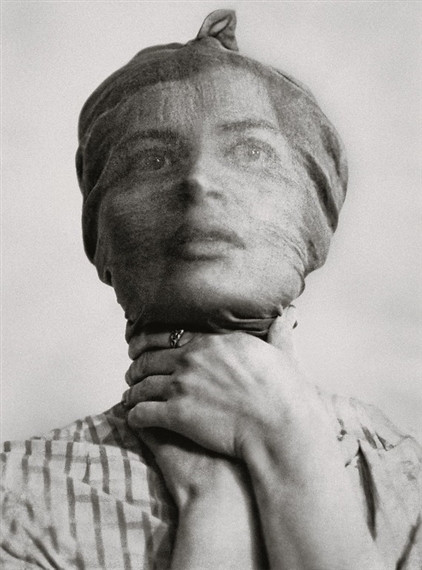
Recommended for you
Having been artistically active for well over fifty years, ฐไณ๚ฑ๐ลฐ์ดวทษฒ๕ฐ์ฒน takes a reflective look at her oeuvre which has always stayed in touch with all the most significant currents of 20th c. avant-garde art: neo-primitivism, expressionism, conceptualism. The contemporary installation she has designed especially for the ฐญฐ๙รณฑ๔พฑฐ์ฒนฐ๙ฒิพฑฒน exhibition, incorporates the artistโs historical works. Sculpture has always been the chief means of Wanda ฐไณ๚ฑ๐ลฐ์ดวทษฒ๕ฐ์ฒนโs expression, though she has more than once crossed the traditional understanding of the discipline.
Born in 1930, Wanda ฐไณ๚ฑ๐ลฐ์ดวทษฒ๕ฐ์ฒน is an artist of utmost originality and independence. Though highly recognized by specialists, her work still awaits an exhaustive analysis in art history. Neither has the potential of her art been fully explored in exhibition spaces. Nonetheless, the few and fragmentary presentations of her work have always intrigued and stirred curiosity. It took only one sculpture and two drawings by ฐไณ๚ฑ๐ลฐ์ดวทษฒ๕ฐ์ฒน, presented in May of this year at a collective exhibition at New Yorkโs 1602 Broadway Gallery, for the Artspace critic, Andrew M. Goldstein, to claim the show to be one of the best ten presented at the Frieze New York 2016 - a key event In the calendar of the global artworld.
The concept for Wanda ฐไณ๚ฑ๐ลฐ์ดวทษฒ๕ฐ์ฒนโs solo presentation at ฐญฐ๙รณฑ๔พฑฐ์ฒนฐ๙ฒิพฑฒน, with an accompanying publication and an academic conference to be held at the Sculpture Museum in February 2016, was forged during the many hours of conversation the artist spent with Ewa Opaลka, the curator of the exhibition and the long-time researcher of her oeuvre. In 2010, ฐไณ๚ฑ๐ลฐ์ดวทษฒ๕ฐ์ฒน made her studio in a post-industrial location in Warsawโs district of Mokotรณw, virtually a hop, skip and jump from ฐญฐ๙รณฑ๔พฑฐ์ฒนฐ๙ฒิพฑฒน. This incredible space, filled with natural light pouring in through the huge windows, houses the artistic effects of ฐไณ๚ฑ๐ลฐ์ดวทษฒ๕ฐ์ฒนโs long and creative life. There are the monumental plaster portraits - like the statues from Rapa Nui - standing among the geometrical constructions made of wooden planks and steel flat bars. The tables and turntables are covered with tools: grinders, hammers, brushes, chisels. Though it may all seem like great chaos, the situation is one of a well thought-out order, where each object has its place and its artistic sense - just as in the exhibition at ฐญฐ๙รณฑ๔พฑฐ์ฒนฐ๙ฒิพฑฒน. Here too, even the tiniest element has a precisely intended location, and every detail does mean something.
โRetrospectionโ is a term borrowed from literature and film. It means a reconstruction of events from the vantage point of a single person. At the exhibition of Wanda ฐไณ๚ฑ๐ลฐ์ดวทษฒ๕ฐ์ฒน, all events and works from the past have become a part of a contemporary installation, made up of pieces brought here from the nearby studio, new objects which have been created especially for ฐญฐ๙รณฑ๔พฑฐ์ฒนฐ๙ฒิพฑฒน, or works which years ago were procured by The National Museum in Warsaw, The Silesian Museum, or The National Museum in Krakow. And it was Krakow with which the artist had the longest relation. She graduated from the local Academy of Fine Arts in 1954. In the years 1969 โ 1981, she belonged to the Second Krakow Group, though she never strayed from her own individual path and thus never saw her membership in the group as of utmost importance. When still at the Academy, ฐไณ๚ฑ๐ลฐ์ดวทษฒ๕ฐ์ฒน developed her original style despite the then binding doctrine of socialist realism. The heavy, expressive, neo-primitive portraits from that period have been incorporated in the new installation titled โElipsesโ created in the space of ฐญฐ๙รณฑ๔พฑฐ์ฒนฐ๙ฒิพฑฒน. The sculptural head is the leitmotif of ฐไณ๚ฑ๐ลฐ์ดวทษฒ๕ฐ์ฒนโs art, processed and reprocessed to almost abstract forms (โThe Headโ, 1967), multiplied as in the monumental installation โThe Tableโ from the years 1968 โ 1972, or ostentatiously dematerialised as in โThe Absolute Elimination of the Sculpture as a Notion of Shapeโ (1972โ1994).

 ARTISTS
ARTISTS







